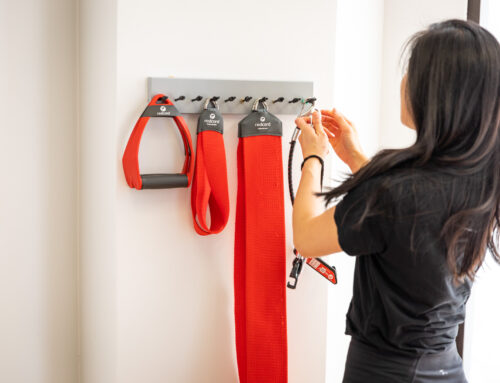Purpose: To examine the effects of sling exercise on the balance of post-stroke patients.
Subjects and Methods: A total of 18 post-stroke patients (13 men; mean age, 55.3 years) were recruited, and randomly assigned them into sling exercise (n=10) and control exercise (n=8) groups. The Good Balance System was used for measurement of velocity (anteroposterior and mediolateral, mm/s), velocity moment(mm2/s) of the movement of the center of pressure, and distance (anteroposterior and mediolateral, mm) between the center of pressure and the center point.
The changes in mediolateral velocity, anteroposterior velocity, and velocity moment were compared between two groups in addition to the comparison of distance between the center of pressure and the center point of postural sway.
Results: The sling exercise group showed more significant improvements in anteroposterior velocity, mediolateral velocity, velocity moment, anteroposterior distance, and mediolateral distance than the control exercise group.
Conclusion: Sling exercise improved post-stroke balance performance and could be used as a therapeutic strategy to improve post-stroke functional recovery.
Key words: Sling exercise, Stroke, Balance





